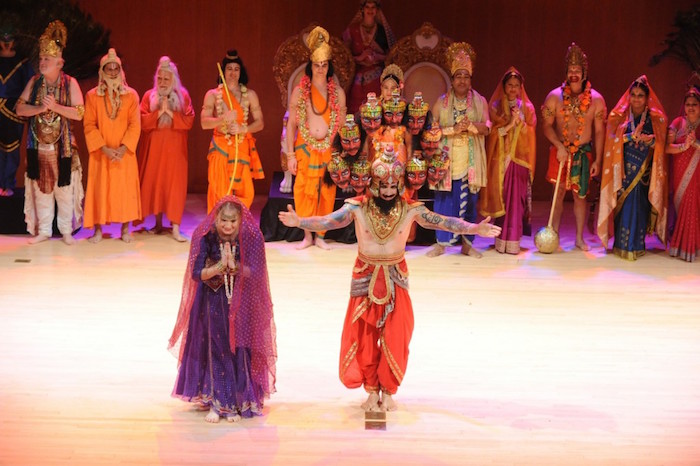
NEW YORK (TIP): Every Year during the festive season of Diwali, the Metropolitan Museum of Art, NYC arranges the presentation of Ramayana (Ram-Leela) in its 708 seat state of the art theater as part of Diwali celebrations.
This year’s presentation of Ramayana held Sunday November 15 had a few new attractions which left the audience mesmerized. According to the Museum authorities, the number of visitors to the event was a little over 3500.
 The performance in English was backed by great music and dances where Americans and Indians came together and showcased an extravaganza of a multicultural theatrical show.
The performance in English was backed by great music and dances where Americans and Indians came together and showcased an extravaganza of a multicultural theatrical show.
The show performed by the East-West School of Dance, choreographed and directed by Satyr Narayan Charka and hosted by The Multicultural Audience Development Initiative Advisory Committee, is one of the prized presentations at the Metropolitan Museum.
 Tirlok Malik, a pioneer of films about Indian-American immigrant themes and a New York Emmy Award nominee, has been playing the role of Bharat (Lord Rama’s brother) in this multicultural performance.
Tirlok Malik, a pioneer of films about Indian-American immigrant themes and a New York Emmy Award nominee, has been playing the role of Bharat (Lord Rama’s brother) in this multicultural performance.
“It was an honor for me to play the part of Bharat at the prestigious Metropolitan Museum under the direction of Pt. S.N. Charka,” said Tirlok Malik.
Tirlok Malik has recently launched www.nritvfilmclub.com which is the first ever streaming website of Indian American movies.
Donna Williams, Chief Audience Development Officer of the Met thanked the audience for celebrating Diwali at the Met.
Mr. Lal Motwani who is on Metropolitan Museum of Art Multicultural Advisory Committee has been associated with organizing the event since it was introduced in the year 2008.
The Ramayana is a Sanskrit epic consisting of 24,000 verses in seven books. Its original version is attributed to the poet-sage Valmiki (ca. 400 B.C.). The epic is an endearing classic tale of love, romance, human frailty, and righteousness; it recounts the adventures of Rama, his wife Sita, his brother Lakshmana, and his staunch ally and devotee Hanuman, who are pitted against the forces of Ravana, the evil king of the island Lanka. This narrative, which has a happy ending, provides a philosophical platform for examining the nature of morality, kingship, and divinity in Indian society that endures to this day.





Be the first to comment